 We welcome you to read Westmorland and Furness Council’s 'Brigsteer and Underbarrow Bridge Closures Newsletter' that will be issued once every month.
The newsletter aims to keep our residents and local businesses updated with the latest information on the bridge closures and present the work we are delivering to restore these links for our communities.
The following detailed update on our progress with assessments and the options study was shared with attendees at the drop-in community event that took place on Wednesday 23 October 2024 at Brigsteer Village Hall.
Drawing from their previous experience of providing similar solutions, WSP have been appraising options for:
-
A temporary bridge, either:
- Over the existing bridges
- Alongside the existing bridges
-
Propping the current structure, either:
- Vertically below the suspended span
- Hanging supports from above the suspended span.
In order to accurately appraise these options, WSP have had to gather information to supplement the 1970s records we hold, including:
- Geotechnical Desk Studies to ascertain the ground conditions for each option.
- 3D scanning and topographical survey, to determine the exact geometry of the structures
- Environmental and ecological reviews and surveys
- Review of potential road remodelling, particularly the extensive realignment and reduction in carriageway width that would be required for any propping solution from below the bridges.
Having established the above, they are now liaising with specialist contractors to provide cost estimates for each option.
It is clear from the work undertaken to date that each option would require substantial work to implement, and have potential undesirable consequences.
Propping from below
- Props installed below would be substantial and would require the reduction of the A591 to a single carriageway, with significant realignment and “chicanes” due to the fact that the half joints are positioned diagonally across the A591 carriageway below. The image below shows an example of a similar scheme.
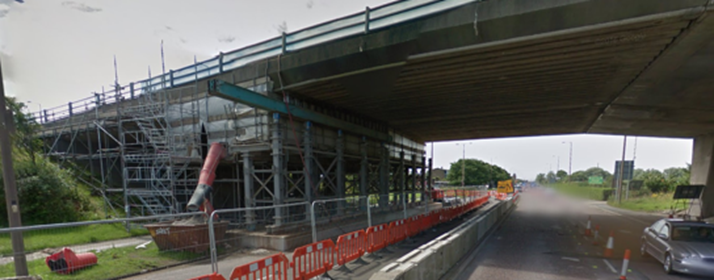
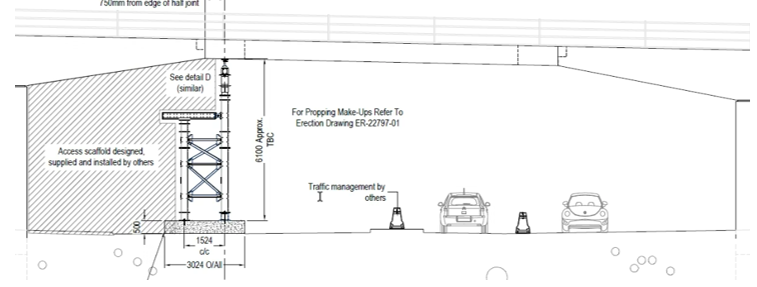 Images courtesy of Mabey Hire
Propping from above
- The bridges could be propped from above, by positioning girders over the bridges and “cradling” the suspended span.
- However, the scale of the support girders would result in a single lane only over the bridges, with traffic signal control. An example of a previously delivered scheme is shown below.
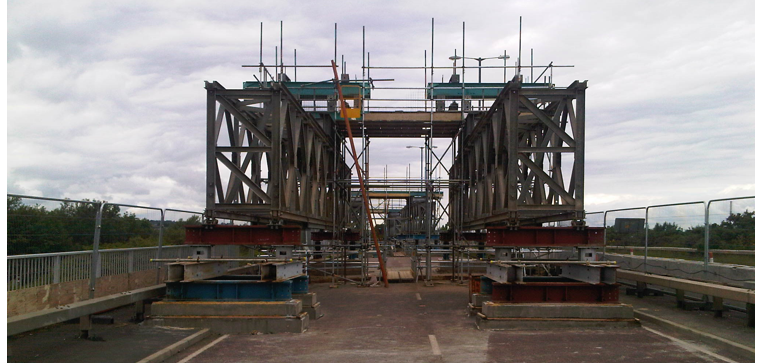 Image courtesy of Mabey Hire
Installing a modular bridge alongside the existing structure
- Installing a temporary modular bridge alongside the existing structures would require extensive construction of support embankments along the approach roads.
- Positioning such a bridge on top of the existing bridges would raise the road level, requiring extensive regrading of the approach roads which currently rise up to the existing bridges.
Whilst all of these options are still considered to be feasible, further extensive consideration is required before the most suitable option can be confirmed, and the Options Study Report finalised.
Due to the complexities described, the delivery of propping or a temporary bridge solution would only be possible later in 2025.
A potentially quicker pathway to reopening the bridges is the use of more sophisticated analysis, with an aim to proving the bridges can accommodate pedestrians and light vehicles.
This sophisticated analysis has been substantially progressed by WSP, and the initial findings pinpointed particular steel reinforcement bars buried within the concrete of the bridge decks that are critical to the capacity of the bridges.
Unfortunately, the 1970s record information we held contained ambiguities over the details of these hidden steel bars. Intrusive investigations were therefore undertaken this week to very carefully core out concrete at the half joint positions (using a “cherry picker” to provide access with overnight closure of the A591) to expose this reinforcement and ascertain its size, spacing and condition.
This will now allow us to remove the conservative safe assumptions which were necessary in the original assessment, potentially now improving the assessed load-carrying capacity of the bridges.
The following image is of extracts from the 1970s record drawings showing the bars exposed during the intrusive investigations:
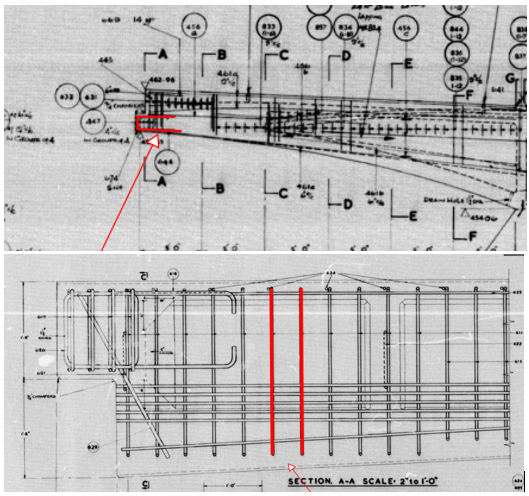 Similarly trial holes were excavated on the bridge deck to remove the ambiguity from the 1970s record drawings regarding the fill material above the bridge deck, which again will be positive for potentially improving the assessed load-carrying capacity of the bridges.
All of this improved information, together with the 3D survey information described above, can now be inputted into the assessment analysis being undertaken by our consultant WSP. Initial indications are that this process may provide a positive result in our aim to reopen the bridges, albeit with a weight restriction that would allow use by light vehicles.
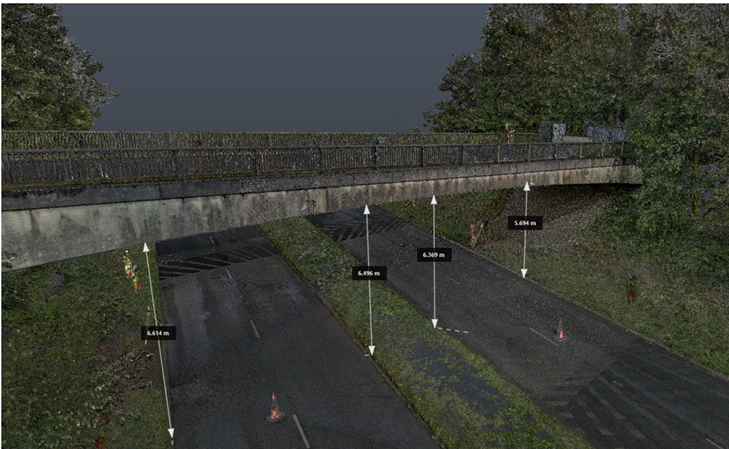 3D point cloud scan with Photogrammetry
The assessment will, of course, need to follow the national Standards to which we, as a responsible Highway Authority, have to adhere.
These Standards are unambiguous in the requirement for the assessment calculations for half-joint bridges of this size containing post-tensioned elements to have the highest level of “Category 3” check, This requires a checking consultant to independently undertake an assessment process as the assessor: effectively two separate consultants independently undertaking the same, or similar, calculations.
We have now engaged Jacobs as the checking consultant. The two Consultants are currently establishing the technical parameters for this process, following which they will complete their calculations and then undertake a “resolution” process where the independent assessment results are compared and any discrepancies examined and resolved.
We are working closely with WSP and Jacobs to complete this process as timeously as possible, but at this time it is not possible to confirm when that will be completed.
However, it is anticipated that, should the assessment and check both provide positive results, it may be possible to reopen the bridges to light vehicles and pedestrians some time in early 2025.
Further monitoring continues to ensure safety of the A591
The next phase of monitoring will be undertaken overnight on Thursday 31 October 2024. The A591 between Plumgarths roundabout and Shenstone Interchange will be closed overnight from 8pm to 6am to allow this work to be undertaken safely.
The half-joints will be accessed using a mobile cherry picker, and the inside of each joint will be inspected using a borescope which is an optical instrument designed to assist visual inspection of narrow, difficult-to-reach cavities. This exercise is required to confirm the A591 is safe to remain open.
|